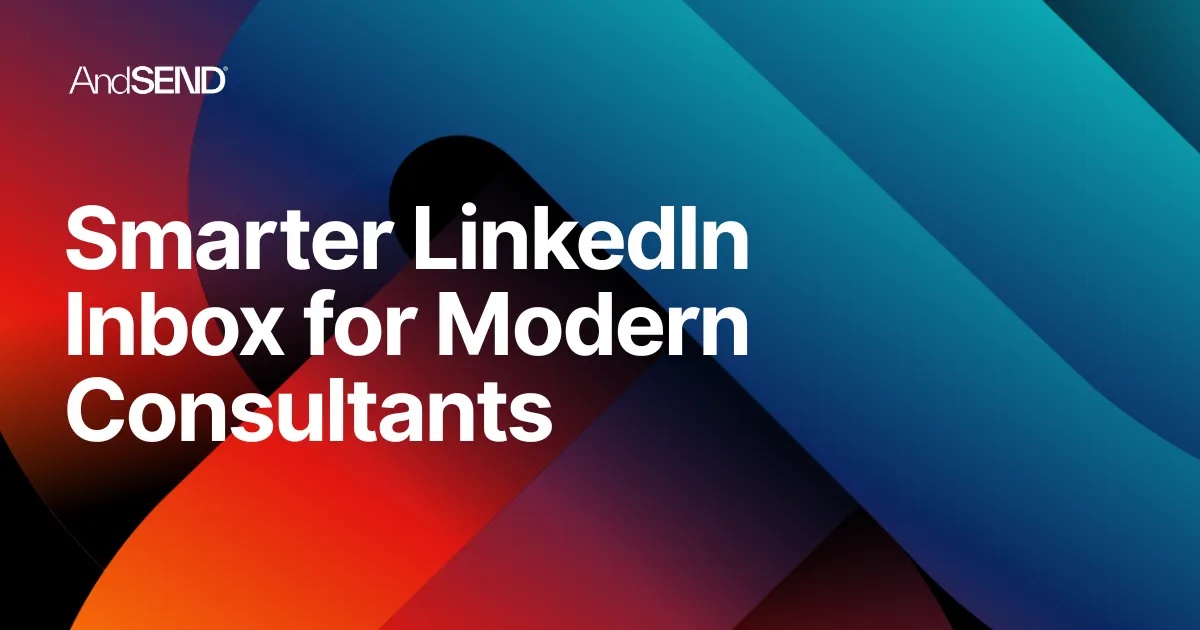
AI generated messages: Friend or Foe?
Published: 12/15/2024
Blank screen. Blinking cursor. That familiar knot in my stomach..
I've been staring at an empty LinkedIn message for what feels like hours (probably closer to 15 minutes, but time moves differently when you're trying to craft the "perfect" message). The recipient? A potential partner I really want to connect with. The challenge? Making sure my message strikes that perfect balance between professional and personal, between showing I've done my homework and not coming across as creepy.
It’s a familiar scene to many.
Over the years, I noticed how this scenario plays out across industries and roles. Whether you're a founder reaching out to investors, a sales professional connecting with prospects, or a consultant nurturing client relationships, we all face that moment of writer's block from time to time - staring at the screen, trying to find the right words.
The elephant in the room
Let's address the elephant in the room: AI is everywhere in communication now. Your inbox is probably full of automated messages. Some are obvious (hello, "Dear [First Name]"), while others are getting increasingly difficult to spot. And that creates an interesting paradox:
We want authentic connections, but surround ourselves with increasingly artificial machines.
This keeps me up at night. Not because I'm afraid of AI - I'm fascinated by it. But because I see both its immense potential and its pitfalls in how humans interact. And I believe we're at a crucial turning point where we need to decide:
Is AI generated communication our friend or foe?
The Iron Man principle
Remember that scene in Iron Man where Tony Stark first puts on the suit?
It doesn't replace him - it amplifies him. It takes his human capabilities and enhances them, allowing him to achieve things that would be impossible alone. But crucially, Tony is still Tony. The suit doesn't think for him or make decisions for him. It's a tool that empowers him to be a better version of himself.
That's exactly how I believe we should think about AI in professional communication.
Not as a replacement for human thought and creativity.Not as an autopilot for our relationships.But as a suit of armor that enhances our natural abilities.
The real communication challenges
Let's be honest about the challenges we're facing:
- Writer's block: We all know what we want to say, but sometimes the words just won't flow
- Research overwhelm: Before reaching out to someone, we need to understand their context, their recent activities, their interests, but we often lack the energy and time to do the full research
- Follow-up fatigue: Keeping track of dozens (or hundreds) of conversations across platforms is mentally exhausting, especially when you don’t get any replies
- The authenticity paradox: We want to be efficient, but we don't want to sound like robots
And here's where it gets interesting: these aren't new problems. They've just been amplified by this new age. We're trying to maintain human connections at superhuman scale.
Finding the Balance
So, how can we make AI our ally in communication?
- Let AI learn your voiceThe best AI assistants should adapt to your communication style, not force you into a generic template. Imagine having a copilot who knows exactly how you'd phrase things, making suggestions that sound authentically like you. The key is choosing AI that learns and evolves with your personal style.
- Let AI handle the heavy liftingResearch, data gathering, finding conversation topics - these are perfect tasks for AI. It can process vast amounts of information while you focus on building genuine connections.
- Keep the send button sacredNever let AI send messages automatically. The final decision about what to say and when to say it should always be yours. That’s the key to keeping communication human.
- Focus on Enhancement, not ReplacementUse AI to enhance your natural communication style, not to create a new one. The goal is to be a better version of yourself, not a different person entirely.
The future of professional communication
I believe we're entering an era where the question isn't whether to use AI in communication, but how to use it wisely. The most successful professionals won't be those who completely reject AI, nor those who rely on it entirely. They'll be the ones who find the sweet spot - using AI to handle the heavy lifting while maintaining their authentic voice.
Think of it this way: if you could spend less time staring at emails and more time building meaningful relationships, would that make you better at work? If you could overcome writer's block and outreach anxiety while still being authentically you, wouldn't that be powerful?
That's the future I'm excited about. One where AI serves as our communication co-pilot, helping us connect more effectively while keeping our humanity intact. Where technology amplifies our natural abilities instead of replacing them.
Like Iron Man's suit, AI in communication should empower us to be better versions of ourselves - not different people entirely.
Moving Forward
Next time you're staring at that blank screen, remember: The goal isn't to be perfect. It's to be authentic, efficient, and human. And maybe, just maybe, having the right AI co-pilot can help you achieve that balance.
We're all figuring this out together. But I'm optimistic that by approaching AI as a tool for enhancement rather than replacement, we can build stronger, more meaningful professional relationships in this new age.
P.S. At Andsend, we're building something that aims to be that Iron Man suit for your professional messages - amplifying your voice and natural abilities to the outer most extent.




